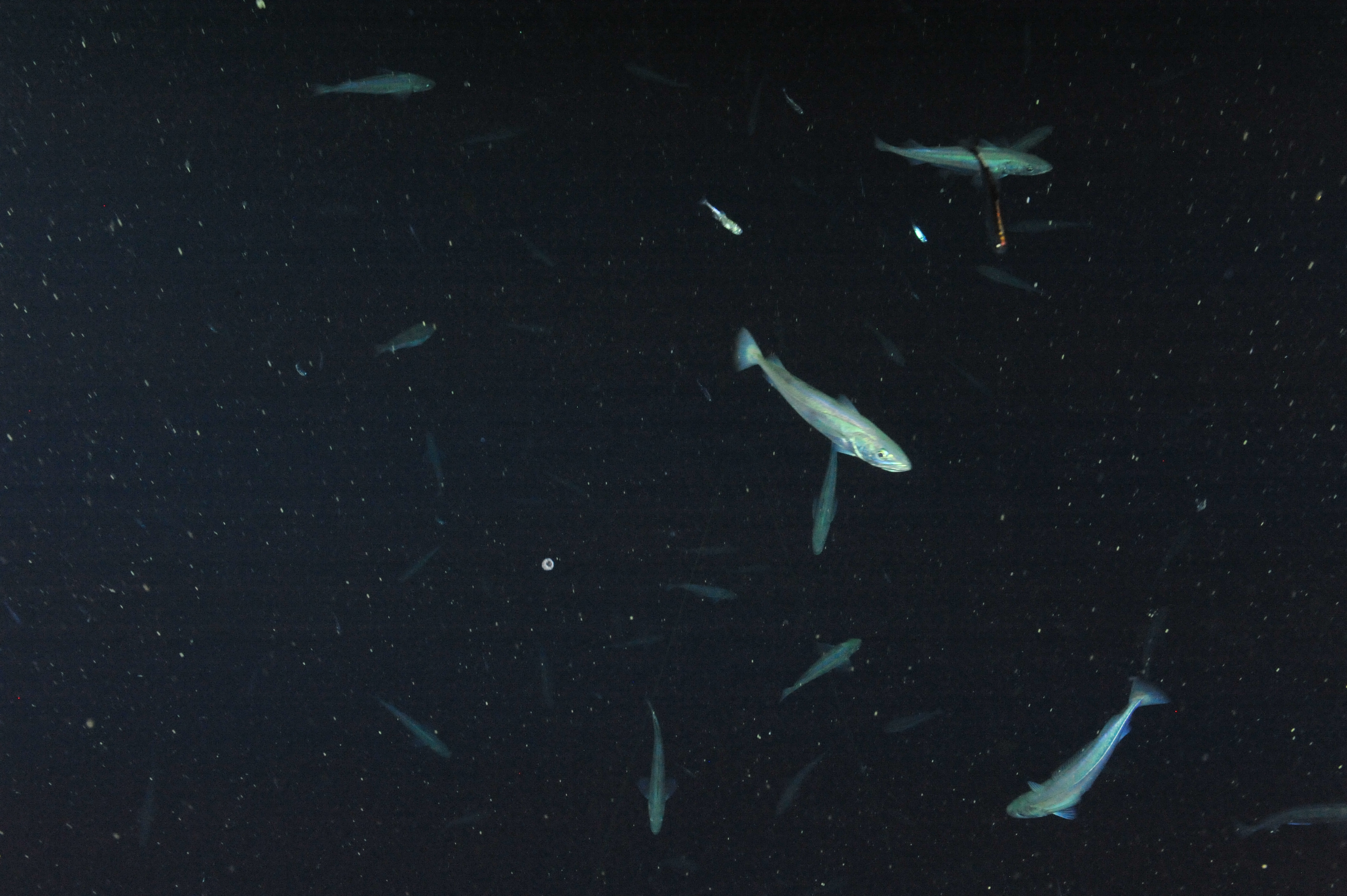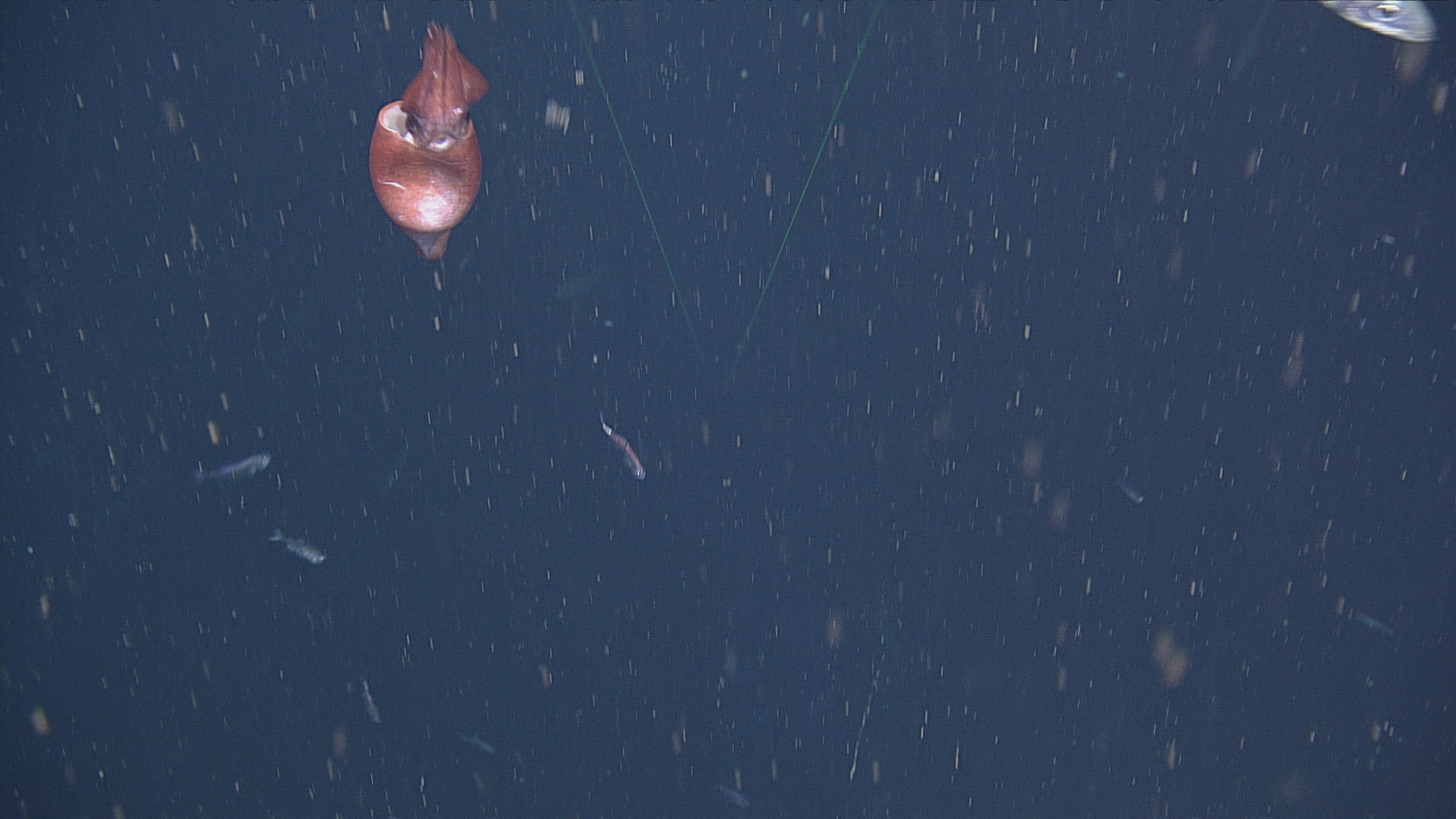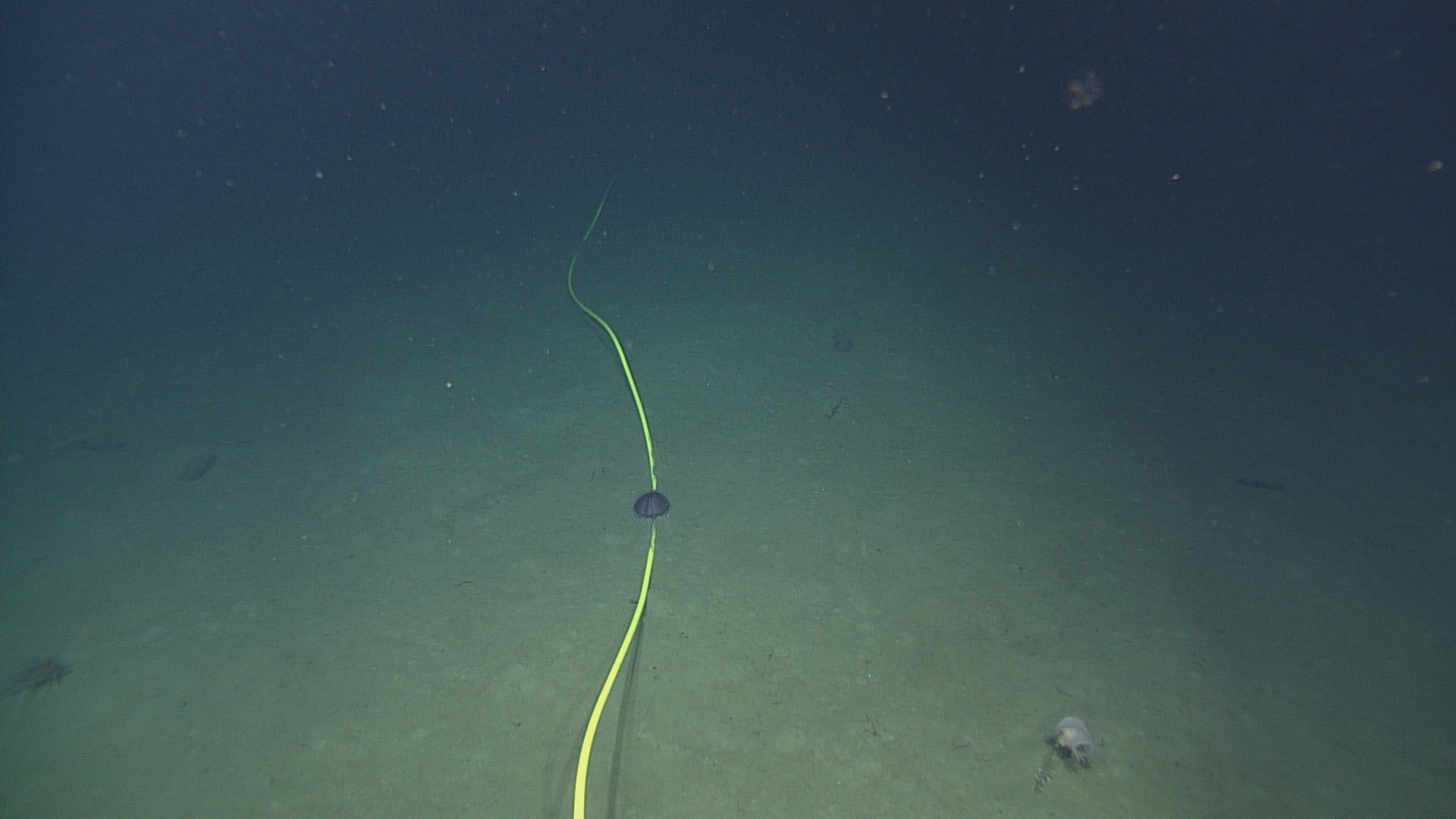Image Archive





























Alex picking up a Velella velella jellyfish that sailed onto the deck

Corey working with Alex

Bio coming soon...

Bio coming soon...

r1734sm

A picture of the optical attenuation sensor attached to junction box LJ01A, prior to deployment at the Slope Base site. Photo Credit: Kendra Daly, USF

The conductivity, temperature, and depth (CTD) sensor attached to the side of LJ01A prior to deployment at the Slope Base site. Photo credit: Kendra Daly, USF

This school of fish extended much further down into the water column at the Slope Base site than previously encountered schools. This image was captured at 539m water depth. Photo Credit: NSF-OOI/UW/CSSF; Dive 1735; V14.

An overhead shot showing the spatial relationship between junction box LJ01A and low-voltage node LV01A at the Slope Base site. Photo Credit: NSF-OOI/UW/CSSF; Dive 1735; V14.

ROPOS lifting the broadband hydrophone mast on LJ01A into position. Photo Credit: NSF-OOI/UW/CSSF; Dive 1735; V14.

An unidentified squid encountered during descent on dive #1735 at Slope Base. Photo Credit: NSF-OOI/UW/CSSF; Dive 1735; V14.

Image of a Velella velella jellyfish, University of Washington, V'14.

A Venus Flytrap anemone and another deep-sea anemone sharing the same stalk next to wire RS01W6, near the Slope Base site. Photo Credit: NSF-OOI/UW/CSSF; Dive 1734; V14.

A bloom of By-the-Wind Sailors (Velella velella), a type of colonial hydrozoan, seen at the surface at the Slope Base site. Credit: Skip Denny, APL, University of Washington, V'14.

A school of unidentified fish encountered by ROPOS near the surface at the Slope Base site during dive #1734. Photo Credit: NSF-OOI/UW/CSSF; Dive 1734; V14.

An echinothuriid sea urchin encountered following the wire during a survey of the cable lay by ROPOS. A Venus Flytrap Anemone can be seen in the lower right quadrant. Photo Credit: NSF-OOI/UW/CSSF; Dive 1734; V14.

Low Voltage node LV01A on the seafloor at Slope Base, as surveyed by ROPOS. Photo Credit: NSF-OOI/UW/CSSF; Dive 1734; V14.

The port arm of ROPOS reaching for the connector in a flange box on the seafloor at the Slope Base site. Photo Credit: NSF-OOI/UW/CSSF; Dive 1734; V14.

The port arm of ROPOS seating the plug connector of RS01W6 to J1 on Low Voltage node LV01A at the Slope Base site. Photo Credit: NSF-OOI/UW/CSSF; Dive 1734; V14.

ADCP (acoustic doppler current profiler) mounted on benthic platform.

dive_r1733

Jack McCafferty photo

An overhead shot from ROPOS hovering above the Slope Base Primary Node, PN1A. Photo Credit: NSF-OOI/UW/CSSF; Dive R1733; V14

A large school of fish near the surface at the Slope Base site. They may be Pacific Sand Lance. Photo Credit: NSF-OOI/UW/CSSF; Dive R1733; V14

A larvacean (the small, white, peanut-shaped object) inside its mucus house, feeding on marine snow at 700m depth at the Slope Base Site. Photo Credit: NSF-OOI/UW/CSSF; Dive R1733; V14

The R/V Thomas G. Thompson steaming into Newport following a successful Leg 1 of the VISIONS '14 cruise. Photo Credit: Kendra Daly, USF

A McLane wire-following profiler, modified to add inductive charging and communications, and holding a CTD, dissolved oxygen, fluorometer and 3D single point velocity sensors. Photo Credit: Kendra Daly, USF

The R/V Thomas G. Thompson docked in Newport between Legs 1 and 2 of the VISIONS '14 cruise. Photo credit: Michael Vardaro, Oregon State University
- Anemone
- Animal
- Arthropod
- ASHES
- Axial
- Axial Base
- Axial Biology
- Axial Caldera
- Bacteria
- Basalt Lava
- BEP
- Biofouling
- biolgoy
- Biology
- Camds
- Camera
- Camhd
- Central Caldera
- Ciliates
- Cnidaria
- Coastal Biology
- Crab
- Deep Profiler Mooring
- Dive Highlights
- Eastern Caldera
- Echinoderms
- Endurance Array
- Engineering Team
- ENLIGHTEN 10
- Exploratorium
- Fish
- Geology
- HD Camera
- HPIES
- Hydrate Ridge
- Hydrates
- Hydrophone
- Hydrothermal Vents
- Illustration
- Inshore 80 Meters
- Instrument
- International District
- J-BOX
- Jason
- Jellyfish
- Junction Box
- K12
- Lava
- Mollusk
- Moorings
- Nodes
- Nudibranch
- Octopus
- OOI
- Oregon Offshore
- Oregon Offshore 600 m
- Oregon Shelf
- Oregon Slope Base
- People
- PN1B
- PN1D
- Polychaetes
- PPSDN
- Primary Node
- RASFL
- ROCLS
- ROPOS
- ROPOS Dives
- ROV Team
- RV Revelle
- RV Sikuliaq
- RV Thompson
- Salp
- Sample
- SC13
- Science Team
- Sea Cucumber
- Sea Star
- Sea Urchin
- Seafloor
- Seismometer
- Sensors
- Shallow Profiler Mooring
- Shark
- Shipboard
- Shore Station
- Slope Base
- Smoker
- Soft Coral
- Southern Hydrate Ridge
- Sponge
- Squid
- Students
- Students & Guest Participants
- Tmpsf
- Tubeworms
- VISIONS 11 Leg 1
- VISIONS 11 Leg 2
- VISIONS 11 Viewers
- VISIONS 13
- VISIONS 14
- VISIONS 15
- VISIONS 16
- VISIONS 17
- VISIONS 18
- VISIONS 20
- VISIONS 22
- VISIONS 23
- Visualization
